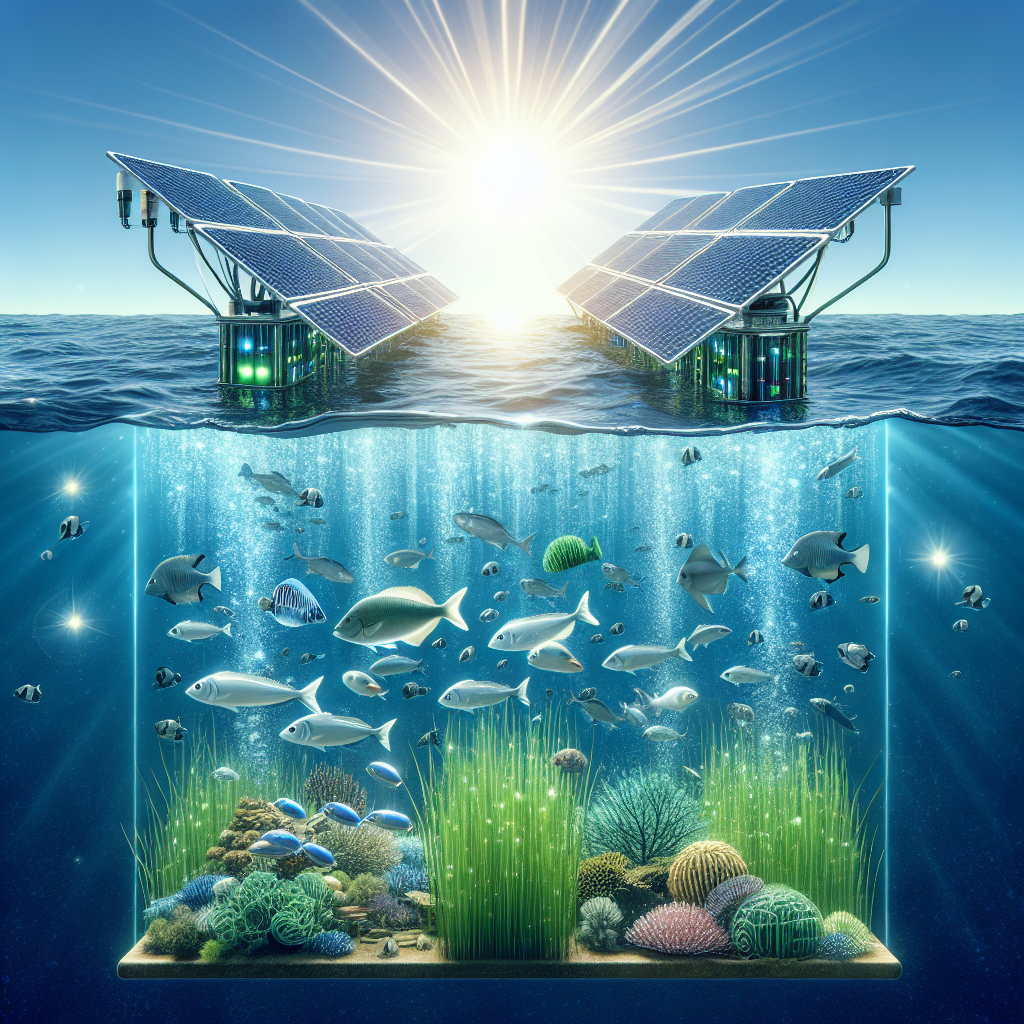Artificial intelligence (AI) is revolutionizing various industries by providing innovative solutions to complex problems. One industry that is benefiting greatly from AI technology is aquaculture, which is the farming of aquatic organisms such as fish, crustaceans, and mollusks. As the demand for seafood continues to rise worldwide, it is essential to find sustainable ways to meet this demand without harming the environment. AI is playing a crucial role in enhancing aquaculture sustainability by improving efficiency, reducing waste, and minimizing the impact on the ecosystem.
One of the key ways in which AI is enhancing aquaculture sustainability is through the use of data analytics. AI algorithms can process large amounts of data collected from sensors, cameras, and other monitoring devices to provide insights into the health and behavior of aquatic organisms. By analyzing this data, farmers can make informed decisions about feeding, water quality, and disease prevention, leading to better management practices and higher yields.
AI-powered drones are also being used in aquaculture to monitor fish populations, identify areas of low oxygen levels, and detect signs of disease outbreaks. These drones can cover large areas of water quickly and efficiently, providing valuable information to farmers in real-time. By using drones, farmers can respond more quickly to potential problems and prevent losses before they escalate.
Another way in which AI is enhancing aquaculture sustainability is through the development of predictive models. These models use historical data and machine learning algorithms to forecast trends in water quality, fish growth, and disease outbreaks. By predicting these events in advance, farmers can take proactive measures to prevent problems and optimize their operations. This not only improves sustainability but also reduces costs and increases profitability.
AI is also being used to optimize feeding practices in aquaculture. By analyzing data on fish behavior, metabolism, and environmental conditions, AI algorithms can determine the most efficient feeding schedules and quantities. This reduces waste and ensures that fish receive the nutrition they need to grow and thrive. By optimizing feeding practices, farmers can improve the overall health of their fish populations and reduce the environmental impact of aquaculture operations.
In addition to improving efficiency and sustainability, AI is also being used to enhance the traceability and transparency of aquaculture products. By using blockchain technology, farmers can track the journey of their products from farm to table, ensuring that they meet quality standards and environmental regulations. This level of transparency builds trust with consumers and allows them to make informed choices about the seafood they purchase.
Overall, AI is playing a crucial role in enhancing aquaculture sustainability by improving efficiency, reducing waste, and minimizing the impact on the environment. By harnessing the power of data analytics, predictive modeling, and drone technology, farmers can optimize their operations and produce seafood in a more sustainable way. As the demand for seafood continues to grow, AI will continue to play a vital role in ensuring the long-term viability of aquaculture.
FAQs:
1. What are the benefits of using AI in aquaculture?
– AI can improve efficiency, reduce waste, optimize feeding practices, enhance traceability, and minimize the environmental impact of aquaculture operations.
2. How does AI help farmers make informed decisions?
– By analyzing data from sensors, cameras, and other monitoring devices, AI algorithms provide insights into the health and behavior of aquatic organisms, allowing farmers to make informed decisions about feeding, water quality, and disease prevention.
3. How does AI improve the traceability of aquaculture products?
– By using blockchain technology, farmers can track the journey of their products from farm to table, ensuring that they meet quality standards and environmental regulations, and providing transparency to consumers.
4. What role do predictive models play in aquaculture sustainability?
– Predictive models use historical data and machine learning algorithms to forecast trends in water quality, fish growth, and disease outbreaks, allowing farmers to take proactive measures to prevent problems and optimize their operations.
5. How can drones enhance aquaculture sustainability?
– Drones can monitor fish populations, identify areas of low oxygen levels, and detect signs of disease outbreaks, providing valuable information to farmers in real-time and allowing them to respond more quickly to potential problems.
In conclusion, AI is revolutionizing the aquaculture industry by providing innovative solutions to complex problems and enhancing sustainability. By harnessing the power of data analytics, predictive modeling, and drone technology, farmers can optimize their operations and produce seafood in a more sustainable way. As the demand for seafood continues to grow, AI will continue to play a vital role in ensuring the long-term viability of aquaculture.

